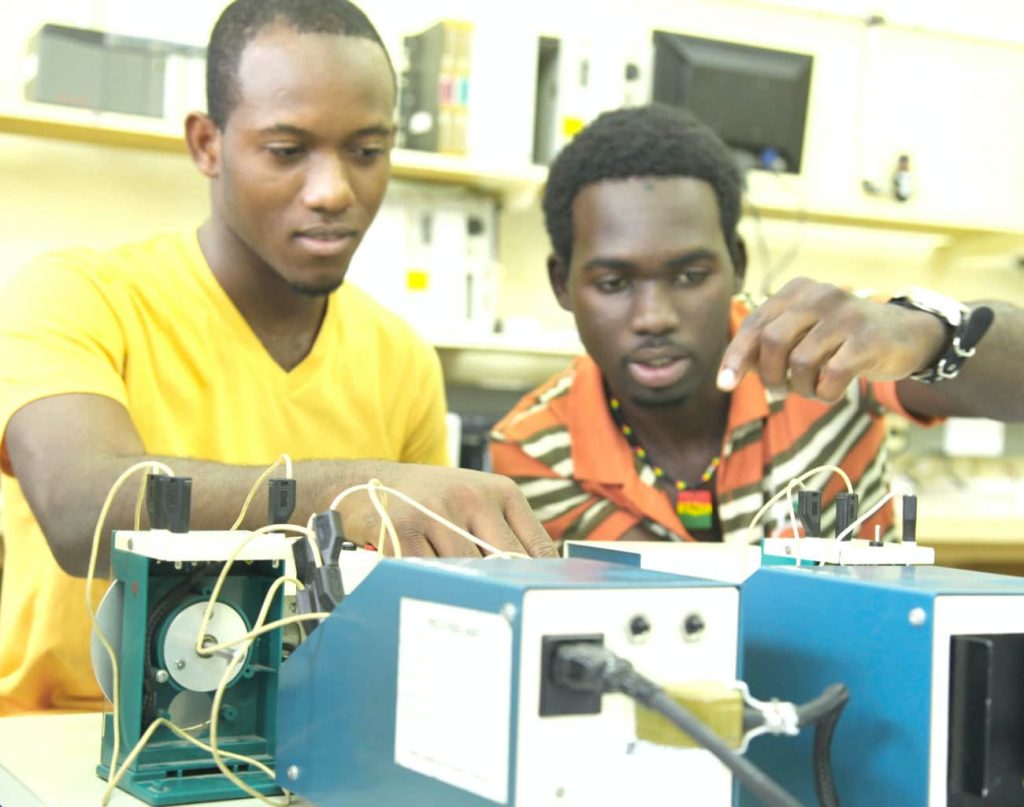fenc
School of Engineering
In March 1958 the Jamaica Institute of Technology was established and in the following year the name as changed to ‘The College of Arts, Science and Technology’ (CAST). The department of Engineering was among the first to be established and the offerings of Mechanical and Electrical Engineering programmes.

Courses of Study
Graduate
- Engineering Management
- Renewable Energy Engineering
Undergraduate
- BEng. in Mechanical Engineering
- BEng. in Chemical Engineering
- BEng. in Civil Engineering
- BEng. in Industrial Engineering
- BEng. in Electrical and Computer Engineering
- BEng. in Agricultural and Biological Engineering
Diploma
- Communications
- Power
- Instrumentation and Controls
Professional Short Courses
OVERVIEW : FENC professional short courses are designed to provide participants with specific skills and knowledge in computing and engineering that are applicable to industry. where possible, the University partners with certifying bodies and/ or international bodies to ensure dual certification.
Professional short courses classes generally encompass a combination of:
- Lectures/Discussion/Demos
- Laboratory/Practical/Field Trips
- In Course and Final Assessment
The Assessment procedures generally involve assignments, in-class tests and practical work.
On successful completion of the course, that is, where a student gains a mark of 50% or above,
the individual will be awarded a “Certificate of Competence”.
Popular Courses
- Air Conditioning & Refrigeration
- Basic Standby Generation Maintenance
- Advanced Standby Generator Maintenance
- Introduction to Energy Efficiency Audits
- Electrical Installation & Regulation
- Introduction to Programmable Logic Controller (PLC) based Control system
- Water and Wastewater Certification
- Basic Electronics
